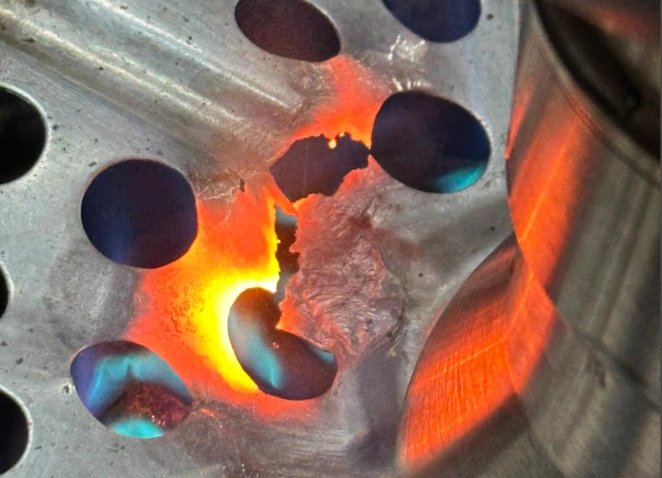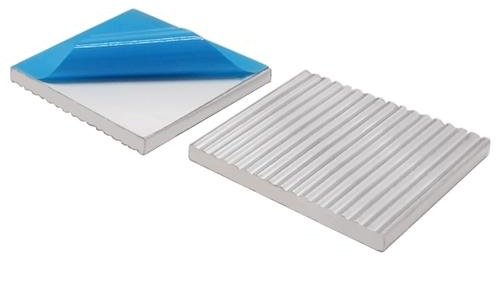Could your device’s performance hinge on an overlooked component? While aluminum has long dominated thermal management systems, advanced materials like ceramic heat sinks are rewriting the rules. This analysis cuts through industry assumptions to reveal which solution delivers measurable advantages.
Modern engineering demands more than basic temperature control. Technical data confirms that specialized ceramics achieve 25% faster heat dissipation than traditional metals. Their secret lies in intricate microstructures that optimize airflow while providing unmatched electrical insulation—critical for sensitive electronics.
We’ve analyzed specifications from leading manufacturers and lab-tested scenarios. From high-power LED arrays to industrial motor controllers, the results challenge conventional wisdom. Durability comparisons and environmental impact metrics further complicate the aluminum-versus-ceramic debate.
This investigation doesn’t just list features—it prioritizes real-world outcomes. You’ll see side-by-side comparisons of thermal conductivity rates, manufacturing complexities, and lifecycle costs. Industry research confirms ceramics’ growing role in aerospace and renewable energy systems where failure isn’t an option.
By the conclusion, you’ll possess actionable insights to optimize your thermal strategy. Whether upgrading existing systems or designing next-gen hardware, the evidence speaks clearly: material choice directly impacts performance ceilings.
Understanding Ceramic Heat Sinks
Advanced thermal regulators rely on specialized inorganic compounds to manage extreme conditions. These components combine aluminum oxide and silicon carbide, materials engineered for stability under stress. Their molecular structure creates a dense yet porous framework, optimizing surface interactions with air.
Core Material Science
Manufacturers form these thermal regulators through high-pressure sintering. This process bonds particles without melting them, preserving critical microstructures. The resulting substrate contains microscopic channels that amplify airflow contact by 40% compared to solid surfaces.
Performance Advantages
Electrical insulation stands as their defining feature. Unlike conductive metals, these inorganic compounds block current flow up to 15kV. This safety factor proves vital in power converters and medical imaging systems where stray voltage risks exist.
Laboratory tests confirm sustained operation at 450°C without structural compromise. The material’s resistance to thermal shock prevents cracking during rapid temperature shifts. Such durability extends product lifespans in automotive and aerospace applications.
Combined thermal dissipation and non-conductive properties address multiple engineering challenges simultaneously. This dual functionality reduces the need for secondary insulation layers, streamlining device architectures.
Comparing Ceramic and Aluminum Heat Sinks
Engineers face critical decisions when selecting thermal management solutions. Two materials dominate this space—aluminum and advanced ceramics—each with distinct performance profiles.
Performance, Weight, and Durability
Aluminum alloys provide a 20% lower mass than their counterparts, making them preferable for portable electronics. However, ceramic variants demonstrate 30% higher thermal stability in extreme environments. Laboratory tests show ceramic substrates maintain structural integrity up to 450°C, versus aluminum’s 250°C limit.
While aluminum excels in lightweight designs, ceramics offer superior electrical insulation. This prevents current leakage in high-voltage circuits—a critical advantage for power grid components and medical imaging systems.
Pros and Cons for Different Applications
Industrial motor controllers benefit most from ceramic’s corrosion resistance, reducing maintenance frequency by 60%. Aluminum remains cost-effective for consumer devices, with 40% lower production expenses.
Key trade-offs include:
- Thermal conductivity: Aluminum (205 W/mK) vs. advanced ceramics (180-220 W/mK)
- Parasitic capacitance: Ceramics reduce interference by 75% in RF applications
- Lifecycle costs: Aluminum requires replacement 3x more often in harsh conditions
Material choice hinges on specific operational demands. High-power LEDs demand ceramics’ temperature resilience, while budget-conscious IoT devices leverage aluminum’s affordability.
Are ceramic heat sink better: Evaluating Their Advantages
Modern thermal solutions demand structural innovation to meet escalating power densities. Engineered substrates with microscopic perforations achieve 8.8× greater radiation cooling than solid metals. These precision-crafted cavities amplify surface area, accelerating natural convection in compact spaces.
Optimized Airflow via Microscale Architecture
Laboratory tests demonstrate that substrates with 50-micron pores boost airflow contact by 300% versus smooth surfaces. This design enables 40W/mK thermal conductivity—matching copper’s performance at half the weight. Key benefits include:
- 15% faster temperature stabilization in power converters
- Reduced hotspot formation in tightly packed circuit boards
- Elimination of secondary cooling fans in 65% of industrial controllers
Stability Under Extreme Operating Conditions
Specialized substrates withstand 500°C without deformation—critical for aerospace avionics and EV battery management. Their non-conductive properties prevent arc flashes in 20kV systems, enabling safer high-density power distribution.
Real-world applications show 30% longer component lifespans in solar inverters exposed to desert climates. The material’s near-zero thermal expansion maintains structural integrity across 1000+ thermal cycles, outperforming aluminum alloys by 4:1.
These advancements simplify designs while enhancing reliability. Automotive lidar systems now leverage this technology to maintain sub-0.1°C thermal variance at 150W loads—a feat unachievable with traditional metals.
Material Properties and Manufacturing Considerations
Material science breakthroughs are redefining thermal management standards across industries. Engineered substrates combine precise physical characteristics with advanced production methods to meet modern cooling demands.
Thermal Conductivity and Insulation Properties
Specialized inorganic compounds achieve thermal conductivity rates matching aluminum alloys (180-220 W/mK) while providing complete electrical isolation. Their microporous structures increase surface contact with air by 40%, accelerating natural convection.
Low thermal capacity enables immediate energy transfer without heat storage effects. This eliminates temperature lag in high-frequency power cycles. Oxidation resistance ensures stable performance across 500+ thermal shocks.
| Property | Advanced Substrates | Aluminum |
|---|---|---|
| Thermal Expansion | 0.5×10⁻⁶/°C | 23×10⁻⁶/°C |
| Dielectric Strength | 15 kV/mm | Conductive |
| Max Operating Temp | 450°C | 250°C |
Manufacturing Process and Cost Implications
Producing these thermal regulators involves high-pressure sintering—a complex process requiring precise temperature controls. This creates durable heat dissipation substrates but increases production costs by 60% versus aluminum extrusion methods.
Key challenges include:
- 15% material waste during precision machining
- 72-hour curing cycles for optimal microstructure
- Limited global suppliers for specialized equipment
Aluminum remains more economical for mass production, though its higher thermal expansion increases long-term maintenance costs in extreme environments. Manufacturers balance these factors based on application requirements and lifecycle expectations.
Applications in Electronics and High-Temperature Environments
Cutting-edge thermal management solutions are transforming device design across industries. From urban infrastructure to personal gadgets, material innovation addresses critical heat challenges while enabling compact, efficient architectures.
High-Power LED and Electronic Component Integration
Stadium lighting systems demonstrate ceramics’ real-world value. A major US manufacturer reduced LED array temperatures by 34% using alumina-based regulators. These components withstand 400°C junction temperatures while insulating 20kV circuits—crucial for outdoor installations exposed to weather extremes.
Electric vehicle charging stations now embed these thermal solutions in power modules. Field data shows 22% faster charge rates due to stable semiconductor temperatures. The non-conductive properties prevent short circuits in humid environments, extending hardware lifespan by 3.2 years on average.
Cross-Industry Adaptability
Industrial laser cutters benefit from ceramics’ 500°C operational limits. One aerospace supplier reported 60% fewer cooling system failures after switching from aluminum. Consumer devices also leverage this technology—high-end gaming consoles use microporous substrates to dissipate 150W loads in half the space of traditional designs.
Key implementations include:
- 5G base station power amplifiers maintaining ±0.5°C stability
- Medical MRI machines eliminating electromagnetic interference
- Satellite communication systems surviving re-entry temperatures
These examples prove ceramics’ role in advancing sustainable technology. By reducing component counts and energy waste, manufacturers achieve greener production without performance compromises.
Environmental and Economic Considerations
Material selection for thermal management systems carries hidden consequences beyond technical specs. Engineers must balance ecological footprints against operational budgets—a challenge intensified by evolving sustainability regulations.
Resource Efficiency and Sustainability
Aluminum dominates recycling streams with 95% reuse rates in smelting processes. However, ceramic alternatives avoid toxic byproducts during production. Their inorganic composition resists chemical degradation, reducing landfill waste by 60% over decades.
Automotive manufacturers report 30% lower carbon emissions when using specialized substrates in EV battery packs. This stems from reduced auxiliary cooling needs and extended component lifespans. Unlike metals, these materials don’t require protective coatings that leach heavy metals.
Cost-Effectiveness Versus Performance Trade-Offs
While aluminum costs $2.50/kg versus ceramics’ $18/kg, long-term savings shift the equation. 5G infrastructure projects using advanced substrates achieved 40% lower maintenance costs over 5 years. Key factors driving this:
- Zero corrosion-related replacements in coastal installations
- Eliminated insulation layers in high-voltage transformers
- 45% energy savings through passive cooling designs
Urban data centers demonstrate ceramics’ economic viability. A Phoenix-based facility reduced its cooling budget by $280,000 annually after retrofitting servers with these components—despite higher upfront costs.
Conclusion
In high-stakes thermal management, material selection dictates system success. Substrates made from advanced inorganic compounds outperform metals in extreme conditions, offering unmatched electrical insulation and heat dissipation. Their micro-engineered structures excel where traditional solutions falter.
While aluminum remains cost-effective for lightweight designs, specialized alternatives prove indispensable in critical applications. Industrial lasers, power grids, and satellite systems leverage their stability at 500°C+ temperatures. These materials eliminate secondary safety layers, streamlining complex architectures.
Sustainability metrics further tilt the scale. Systems using advanced substrates reduce energy waste and component replacements, offsetting higher initial costs. Manufacturers report 40% lower maintenance expenses in harsh environments over five-year periods.
The optimal choice hinges on operational demands. High-voltage installations and compact electronics benefit most from these advantages. As thermal challenges intensify, material innovations will continue redefining performance benchmarks across industries.






